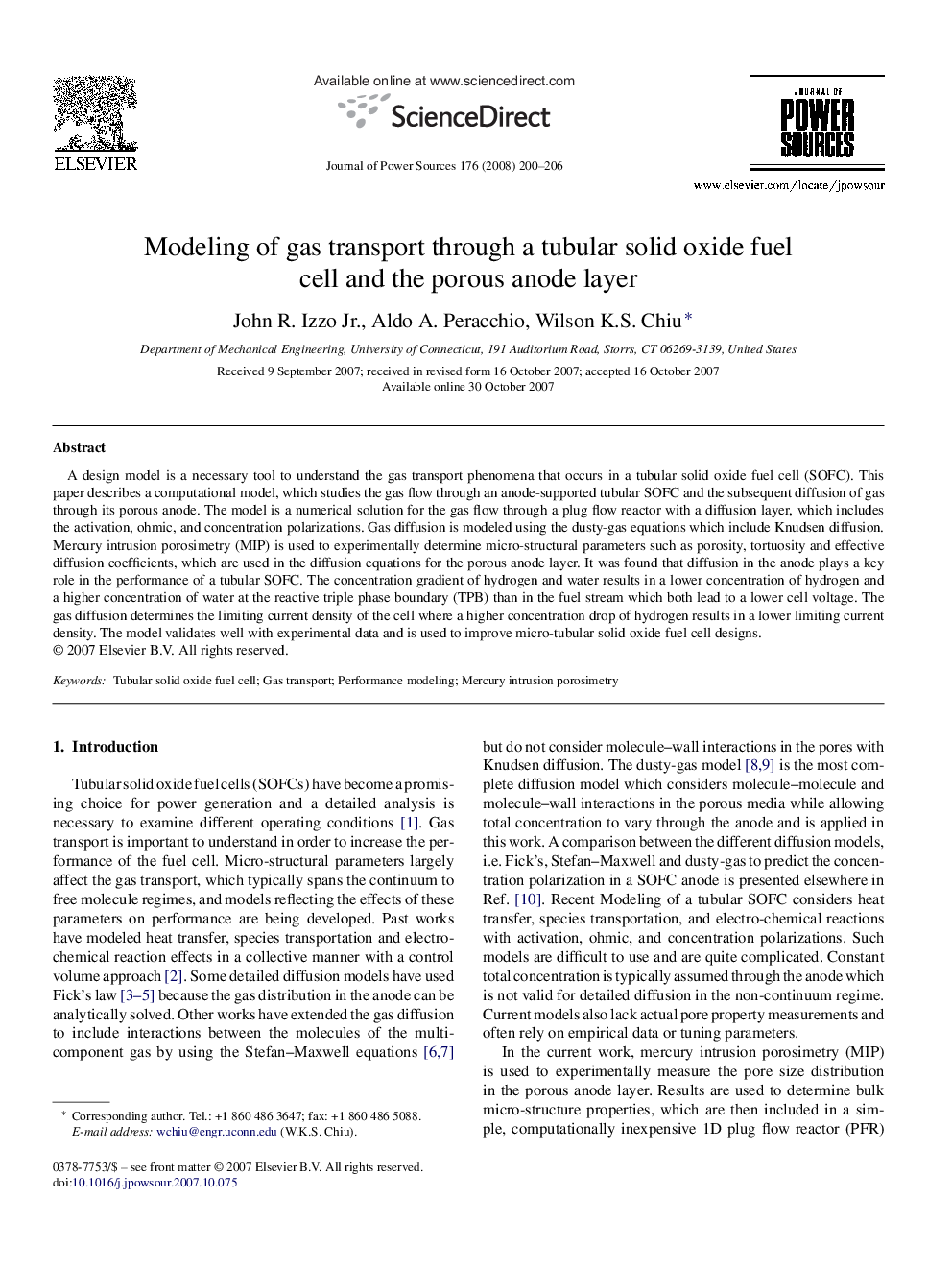| Article ID | Journal | Published Year | Pages | File Type |
|---|---|---|---|---|
| 1285885 | Journal of Power Sources | 2008 | 7 Pages |
A design model is a necessary tool to understand the gas transport phenomena that occurs in a tubular solid oxide fuel cell (SOFC). This paper describes a computational model, which studies the gas flow through an anode-supported tubular SOFC and the subsequent diffusion of gas through its porous anode. The model is a numerical solution for the gas flow through a plug flow reactor with a diffusion layer, which includes the activation, ohmic, and concentration polarizations. Gas diffusion is modeled using the dusty-gas equations which include Knudsen diffusion. Mercury intrusion porosimetry (MIP) is used to experimentally determine micro-structural parameters such as porosity, tortuosity and effective diffusion coefficients, which are used in the diffusion equations for the porous anode layer. It was found that diffusion in the anode plays a key role in the performance of a tubular SOFC. The concentration gradient of hydrogen and water results in a lower concentration of hydrogen and a higher concentration of water at the reactive triple phase boundary (TPB) than in the fuel stream which both lead to a lower cell voltage. The gas diffusion determines the limiting current density of the cell where a higher concentration drop of hydrogen results in a lower limiting current density. The model validates well with experimental data and is used to improve micro-tubular solid oxide fuel cell designs.
